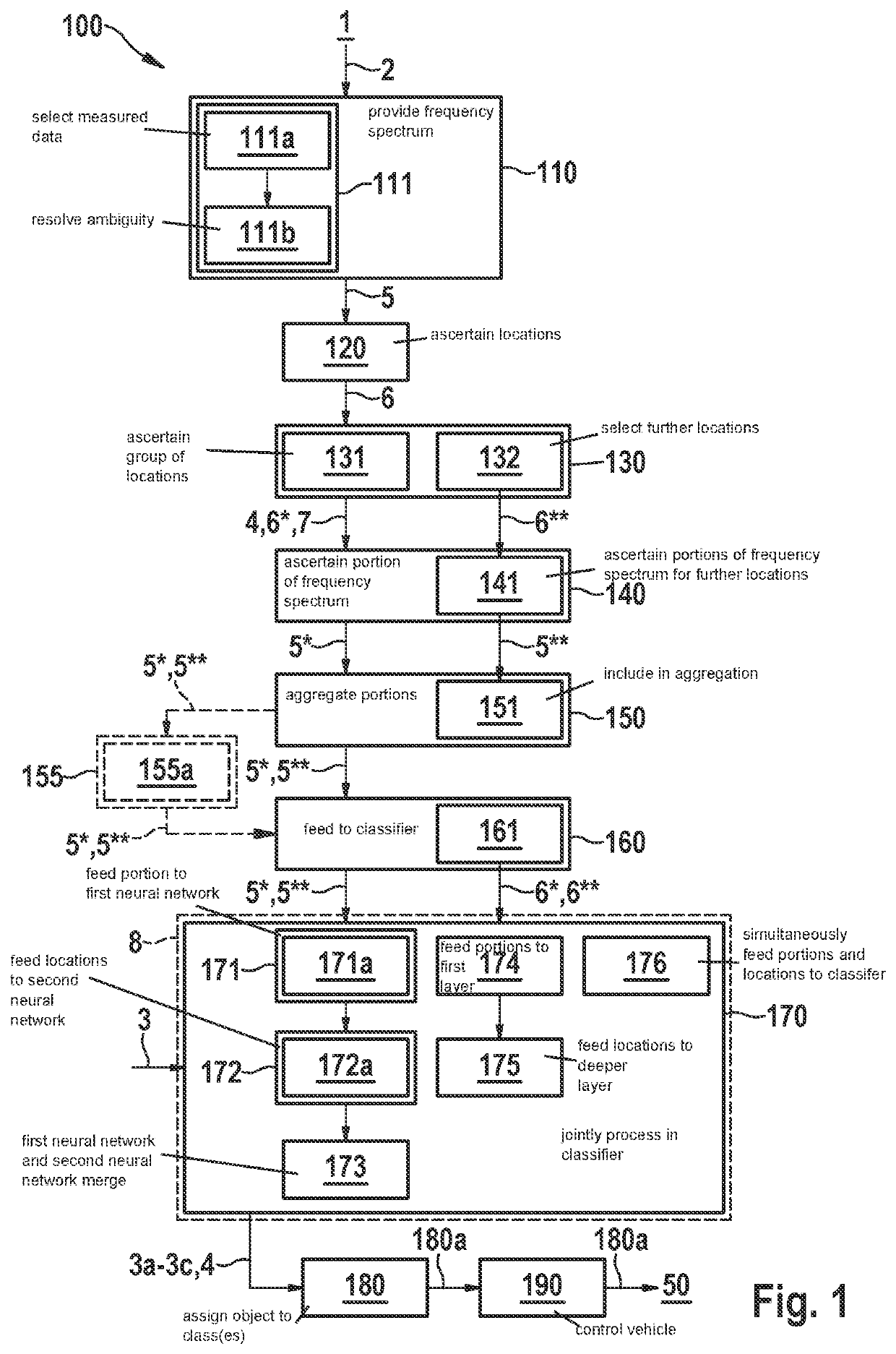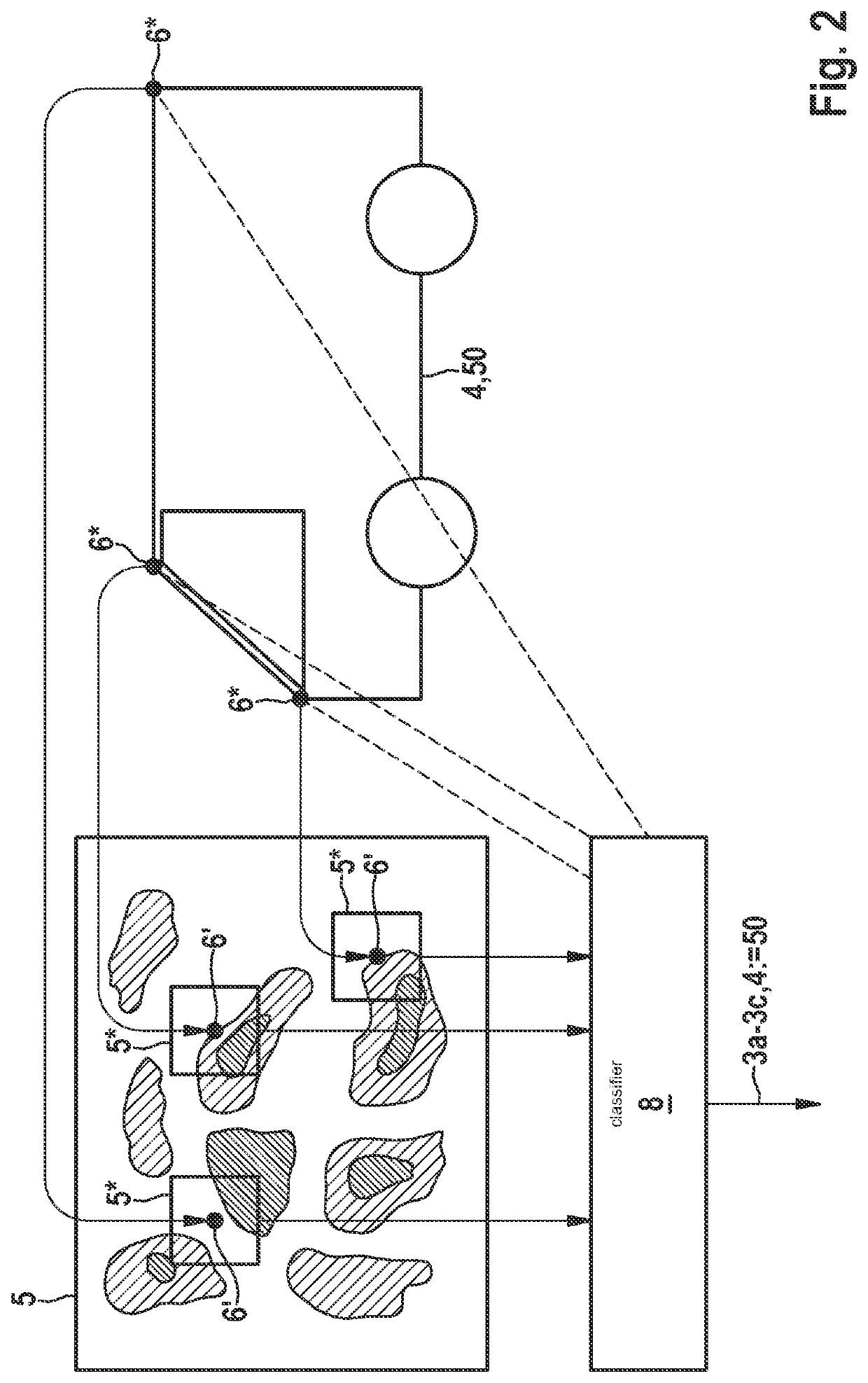Hybrid evaluation of radar data for classifying objects
a technology of object classification and radar data, applied in the direction of reradiation, measurement devices, instruments, etc., can solve the problem that the type of object cannot be recognized directly from radar signals, and achieve the effect of less computing time, less resource requirements, and easy training
- Summary
- Abstract
- Description
- Claims
- Application Information
AI Technical Summary
Benefits of technology
Problems solved by technology
Method used
Image
Examples
Embodiment Construction
[0035]FIG. 1 is a schematic flowchart of an exemplary embodiment of method 100 for classifying measured data 2 recorded by at least one radar sensor 1, in accordance with the present invention.
[0036]In step 110, a frequency spectrum 5 of time-dependent measured data 2 from radar sensor 1 is provided. According to block 111, this frequency spectrum 5 may in particular be provided for example as a distance-speed representation. According to block 111a, measured data 2 recorded using radar radiation of modulation type JSFMCW may in particular be selected for example. According to block 111b, an ambiguity of these measured data 2 regarding the speed may then be resolved using any arbitrary additional piece of information.
[0037]In step 120, from this frequency spectrum 5, locations 6 from which reflected radar radiation has reached radar sensor 1 are ascertained. In step 130, at least one group 7 of such locations 6* belonging to one and the same object 4 is ascertained. In step 140, for...
PUM
 Login to view more
Login to view more Abstract
Description
Claims
Application Information
 Login to view more
Login to view more - R&D Engineer
- R&D Manager
- IP Professional
- Industry Leading Data Capabilities
- Powerful AI technology
- Patent DNA Extraction
Browse by: Latest US Patents, China's latest patents, Technical Efficacy Thesaurus, Application Domain, Technology Topic.
© 2024 PatSnap. All rights reserved.Legal|Privacy policy|Modern Slavery Act Transparency Statement|Sitemap


